In Maths the word reflection is used in graphs in coordinate geometry. When the reflection of a point in the y-axis, the sign of the y-coordinate remains the same and the sign of the x-coordinate will be varied. The graph is a reflection with respect to the y-axis that is x = 0.
Also Practice:
- Reflection of a Point in the x-axis
- Problems on Reflection in the x-axis or y-axis
- Worksheet on Reflection in the Origin
Reflection of a Point in the y-axis – Definition & Meaning
When the point is reflected in the y-axis, then the x-coordinate will be changed and the y-axis remains the same. For example, the point P(x, y) is P(-x, y).
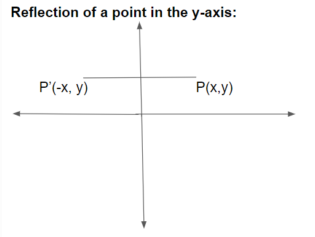
What are the Rules to Find the Reflection of a Point in the y-axis?
The rules to follow the reflection of a point in the y-axis are shown below.
i. Change the sign of the x-coordinate (abscissa).
ii. Maintain the y-coordinate.
Reflection of a Point in the y-axis Examples
Example 1.
Write the coordinates of the image of the point (-1, 2) when reflected in the y-axis.
Solution:
Given that the point is (-1, 2)
As per the rule of reflection of points in the y-axis, the x coordinate will become negative of its value while the y-coordinate will stay the same.
The image of (-1, 2) is (1, 2).
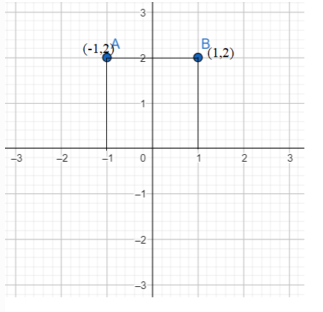
Example 2.
Write the coordinates of the image of the point (3, -4) when reflected in the y-axis.
Solution:
Given that the point is (3, -4)
As per the rule of reflection of points in the y-axis, the x coordinate will become negative of its value while the y-coordinate will stay the same.
The image of (3, -4) is (-3, -4).
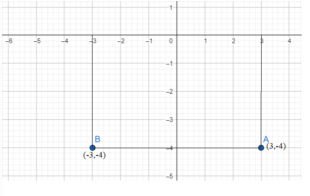
Example 3.
Write the coordinates of the image of the point (-5, 6) when reflected in the y-axis.
Solution:
Given that the point is (-5, 6)
As per the rule of reflection of points in the y-axis, the x coordinate will become negative of its value while the y-coordinate will stay the same.
The image of (-5, 6) is (5, 6).

Example 4.
Write the coordinates of the image of the point (7, -8) when reflected in the y-axis.
Solution:
Given that the point is (7,-8)
As per the rule of reflection of points in the y-axis, the x coordinate will become negative of its value while the y-coordinate will stay the same.
The image of (7, -8) is (-7,-8).
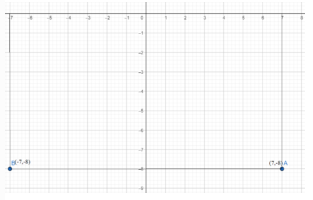
Example 5.
Write the coordinates of the image of the point (-9, 10) when reflected in the y-axis.
Solution:
Given that the point is (-9, 10)
As per the rule of reflection of points in the y-axis, the x coordinate will become negative of its value while the y-coordinate will stay the same.
The image of (-9, 10) is (9, 10).
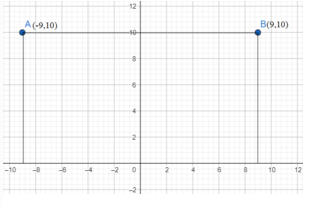
FAQs on Reflection of a Point in the y-axis
1. What does the point that lies on the y-axis represent?
If a point lies on an axis, one of its coordinates must be zero. If point A looks at how far the point is from the origin along the x-axis, the answer is zero. Therefore, the x-coordinate is zero. Any point that lies on the y-axis has an x-coordinate of zero.
2. What is the distance of a point from the y-axis called?
The distance of a point from the y – axis is called x-coordinate, or abscissa, and the distance of the point from the x-axis is called y-coordinate, or ordinate.
3. What is the rule of reflection?
To perform a reflection, we need a line of reflection; the resulting orientation of the two figures is opposite. Corresponding parts of the figures are the same distance from the line of reflection. Ordered pair rules reflect over the x-axis: (x, -y), y-axis: (-x, y), line y=x: (y, x).